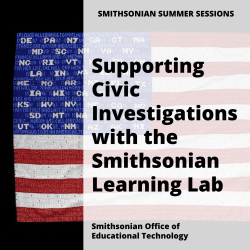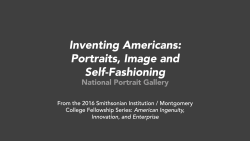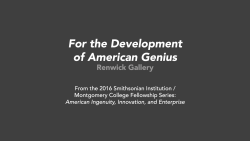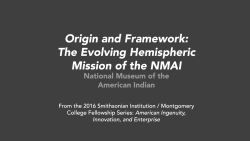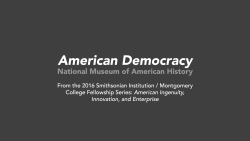Tess Porter
I'm the former User Experience Strategist at the Smithsonian Office of Educational Technology. Here, I focused on the use of digital museum resources to support teaching and learning. My work draws on my experience as a museum educator, digital analyst, usability researcher, and content designer. I hold a B.A. in Anthropology and a B.A. in Art History from University Colorado Boulder, and an M.S. in Museums and Digital Culture with an Advanced Certificate in User Experience from Pratt Institute.
Tess Porter's collections
Visual Connections between Buddhism and Ancient Greece
 Tess Porter
Tess Porter
Perspectives in Portraiture: Wendy Red Star
 Tess Porter
Tess Porter
Identity, Community, and Fire Hats
 Tess Porter
Tess Porter
Tennessee Williams: Examining Portraiture
 Tess Porter
Tess Porter
Richard Wright: Examining Portraiture
 Tess Porter
Tess Porter
Homo floresiensis: Teaching Resources
 Tess Porter
Tess Porter
American Ingenuity, Innovation, and Enterprise: National Portrait Gallery Seminar Resources
 Tess Porter
Tess Porter
American Ingenuity, Innovation, and Enterprise: Renwick Gallery Seminar Resources
 Tess Porter
Tess Porter
American Ingenuity, Innovation, and Enterprise: National Museum of American Indian Seminar Resources
 Tess Porter
Tess Porter
Social Justice: Center for Folklife and Cultural Heritage Resources
 Tess Porter
Tess Porter
Social Justice: Opening Panel Resources
 Tess Porter
Tess Porter
American Ingenuity, Innovation, and Enterprise: National Museum of American History Seminar Resources
 Tess Porter
Tess Porter

